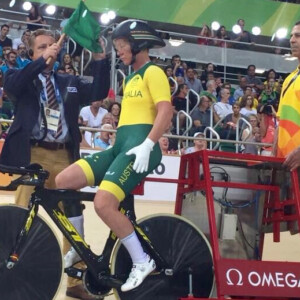HIIT stands for High Intensity Interval Training. It has been in the fitness spotlight rather frequently in the past couple of years. Some studies have shown that HIIT type efforts can keep you fit by doing as little as six minutes exercise per week, I’m not going to debate this rather outrageous claim; however as cyclists we can benefit from some of the HIIT strategies.
Most of us are familiar with interval training on the bike, however, off the bike high intensity interval training can be used as an adjunct to keeping aerobically fit when the bike isn’t available.
I am a big fan of cross training, because I want to be able to continue to ride my bike way into my twilight years! Cross training makes you a well rounded athlete, and encourages your body to move in a wider range of movement than just cycling. Becoming a fit and strong cyclist is important, however the range of movement engaged in a pedal stroke is rather limited and does have drawbacks in the wider scope of overall fitness. If you spend your days sitting at a desk, then hours sitting on the bike also puts your body in to the same hunched over position. The one main disadvantage of cycling is that it is non load bearing. Load bearing activities such as running, circuit training and strength training help increase bone density, which otherwise decreases with age unless we do something about it.
• High Intensity cross training is easily accessible if you spend time travelling with work.
• It can keep your workouts fresh and exciting. Adding a little bit of something different into your weekly plan can be a great way to keep motivation.
• It helps to keep you aerobically fit during the winter months when the weather can sometimes prevent riding.
Before you all cry ‘but what about specificity’, yes I agree if you want to get better at cycling then you need to cycle. But for most the reality is we should introduce other forms of training in to our plans to enhance overall fitness, increase bone density and help with posture and flexibility.
My favorite form of off the bike HIIT is hill sprints. Why do these you may be asking?
• It only requires a good pair of running shoes (or off road running shoes if you are running on trails).
• It requires very little preparation or thinking.
• Surprisingly it also puts less compressive force on your joints than sprinting on the flats, and therefore your risk of injury is less.
Note that if you do not currently run, you will need to ease in to this. In comparison to cycling, hill running is still a high impact sport and as such can wreak havoc on joints and ligaments that are not used to it.
The hill efforts are very short – no longer than 12 seconds, to be completed on a steep hill of 6+ % gradient. They will be maximal intensity efforts and for that reason the efforts are very short.
Your first session should contain no more than one or two of these hill sprints on a 6-8 % gradient. After the first session you can increase the number of sprints by one or two per week, maxing out at 10 sprints per session.
Hill sprints checklist:
• Warm up properly for at least 10-15 minutes. Use a combination of low intensity drills such as skipping, jogging, leg swings, walking lunges, and high knees.
• After the warm up, start with a few lower intensity sprints of 60%, 70% then 80% of your max before starting the main set.
• Accelerate slowly – accelerating too fast puts your hamstrings at more risk. Hamstring injuries are often caused by rapid acceleration activities.
• Walk down the hill for recovery – this will give you sufficient recovery time.
• Gradually increase the number of intervals each session.
If running isn’t your bag, or there isn’t a hill or suitable open space then there are plenty of other options available to you. Detailed below is a High Intensity Intervals Training session that will get the heart pumping.
With all of these movements, try to land softly with bent legs.
Complete 20-30 seconds of each exercise then move on to the next exercise without taking a rest.
After completion of the set (all six exercises), take a breather, let your heart rate recover and then repeat the set another two times through.
Single leg hops (4 square)
Why? It helps to correct any imbalances in strength from left to right leg. It enhances balance and also strengthens the connective tissue in the joints.
How? Using whatever may be available to you (belt, scarf, jumper etc.) create a cross on the floor, this forms your 4 squares. The aim of this exercise is to jump in to each of these squares on one foot.
Hope on one leg to each of the four segments, remembering to land softly and absorb any impact by bending the knee on landing.
Repeat the exercise on the opposite leg, you may notice that one legs feels stronger and you have better balance on one leg.
Russian twists
Why? This is a core workout for the obliques, these muscles help rotate your torso, and without strong obliques the support of the core falls to just the lower back and abdomen.
How? Sit on the ground with your knees bent, engage your core muscles by pulling your belly button towards your spine, then lean back a few inches while lifting your feet off the floor. Keep your back straight. Reach your arms out in front of you and in a controlled movement twist your torso to the right, back to the centre then to the left. If this is too difficult then lower your feet to the ground.
Mountain climbers
Why? A strong core helps to stabilize your hips during each pedal stroke. You need to have mastered the static plank before you progress to the mountain climber. The plank was part of the 8 Steps for Speed strength training article in Sept/Oct 2015 edition, now also available on the website.
How? Assume the pushup position to start. It is important to keep your arms straight with your hands directly underneath your shoulders and maintain a straight line body position from head to heels.
Quickly bring one knee to the chest, return this leg to the starting position and repeat with the opposite leg.
Alternating split squat jumps
Why? It targets strength in the quads, glutes and hamstrings and promotes good balance and single leg strength. Note that it is quite an advanced movement that takes good joint stabilization and strength to perform properly. If you feel you are losing your form on this exercise then stop and take a breather.
How? Start in a split stance position with one leg forward and the other back.
Jump up and while in the air quickly switch legs forward and backward.
Land and absorb the impact softly by bending both legs and immediately leap in to another jump. Keep your chest up and maintain a good posture. The front knee should not move too far past the toes.
Squat explosive jump
Why? Recruits fast twitch muscles in your legs and hips. This will help build explosive race winner power.
How? Start standing with your feet slightly wider than shoulder width apart and your arms by your side.
Squat down until your thighs are parallel with the ground then explosively jump up as high as you can using your arms to help project you up.
When you land bend your knees to absorb the impact, immediately return to standing and go again.

